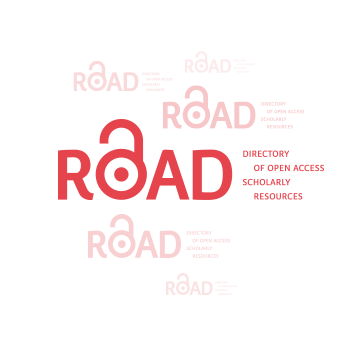The Effects of The Corona Pandemic on Urban Planning and The Future of Yemeni Cities: A Case Study of Thamar
DOI:
https://doi.org/10.59994/pau.2024.3.1Keywords:
Urban Planning, Corona, City Planning, The Future of Yemeni Cities, ThamarAbstract
This study aims to explore the effects of the coronavirus pandemic on urban planning and the future of Yemeni cities, focusing on the factors that make cities more vulnerable to the spread of the virus, such as population density and social interactions. The study also discussed the measures taken by cities to mitigate the impact of the pandemic, reviewed the experiences of some countries in the post-pandemic phase, and conducted a case study in the Yemeni city of Thamar and its impact on the Coronavirus and its visions for future urban planning. The study used the inductive approach and the analytical approach, given the nature of the study and its suitability to explore and understand complex phenomena related to the Corona pandemic and urban planning. The Corona pandemic revealed the crucial role of urban planning in confronting health crises, in general, and the pandemic contributed to the necessity of rethinking the modern human lifestyle and well-being. The COVID-19 crisis has provided an excellent opportunity for planners and policymakers to take transformative action towards creating more just, resilient, and sustainable cities and the need to expand pedestrian areas, create safe green areas, provide public open spaces within cities, and provide residential neighborhoods with green, recreational spaces and parks available to all. This study highlights the importance of urban planning in light of health crises. It provides insights on enhancing the resilience of cities in general and Yemeni cities in particular and their sustainability in the future.
Downloads
References
المراجع العربية
السدحان، عبدالله. (2010). الآثار الاجتماعيه للتوسع العمراني في المدينة الخليجية. الدوحة، وزارة الأوقاف والشؤون الإسلامية.
بلغليفي، نوال؛ قوت، سهام. (2016). البعد الإيكولوجي في التخطيط العمراني بالمدينة الصحراوية (بلدية الزاوية العابدية أنموذجا، دراسة ميدانية بمدينة تقرت). مجلة العلوم الإنسانية والاجتماعية، عدد خاص بالملتقى الدولي تحولات المدينة الصحراوية- تقاطع مقاربات حول التحول الاجتماعي والممارسات الحضرية-، 255-234. DOI: https://doi.org/10.35156/1173-000-022-025
المراجع العربية بنظام الرومنة:
Alsdhan, 'Ebdallh. (2010). alathar alajtma'eyh lltws'e al'emrany fy almdynh alkhlyjyh. aldwhh, wzarh alawqaf walsh'ewn aleslamyh.
Blghlyfy, Nwal؛ Qwt, Sham. (2016). alb'ed aleykwlwjy fy altkhtyt al'emrany balmdynh alshrawyh (bldyh alzawyh al'eabdyh anmwdja, drash mydanyh bmdynh tqrt). mjlh al'elwm alensanyh walajtma'eyh, 'edd khas balmltqa aldwly thwlat almdynh alshrawyh- tqat'e mqarbat hwl althwl alajtma'ey walmmarsat alhdryh-, 255-234.
المراجع الأجنبية
Abdulwasaa, M. A., Abdo, M. S., Shah, K., Nofal, T. A., Panchal, S. K., Kawale, S. V., & Abdel-Aty, A.-H. (2021). Fractal-fractional mathematical modeling and forecasting of new cases and deaths of COVID-19 epidemic outbreaks in India. Results in Physics, 20, 103702 . DOI: https://doi.org/10.1016/j.rinp.2020.103702
Acuto, M. (2020). Engaging with global urban governance in the midst of a crisis. Dialogues in Human Geography, 10(2), 221-224. doi:10.1177/2043820620934232. DOI: https://doi.org/10.1177/2043820620934232
Awada, M., Becerik-Gerber, B., White, E., Hoque, S., O'Neill, Z., Pedrielli, G (2022). Occupant health in buildings: Impact of the COVID-19 pandemic on the opinions of building professionals and implications on research. Building and Environment, 207, 108440. DOI: https://doi.org/10.1016/j.buildenv.2021.108440
Bao, L., & Hu, D. (2021). Reflections on the Design of Urban Community and Residential Buildings in China in the Post-epidemic Era. Festival dell'Architettura Magazine, 120-126.
Bolleter, J., Edwards, N., Cameron, R., Duckworth, A., Freestone, R., Foster, S., & Hooper, P. (2022). Implications of the COVID-19 pandemic: Canvassing opinion from planning professionals. Planning practice & research, 37(1), 13-34. DOI: https://doi.org/10.1080/02697459.2021.1905991
Buheji, M., Vovk Korže, A., Eidan, S., Abdulkareem, T., Perepelkin, N., Mavric, B., . . . Buheji, A. (2020). Optimising pandemic response through self-sufficiency-a review paper. American Journal of Economics, 10(5), 277-283 DOI: https://doi.org/10.5923/j.economics.20201005.02
Cartenì, A., Di Francesco, L., & Martino, M. (2020). How mobility habits influenced the spread of the COVID-19 pandemic: Results from the Italian case study. Science of the total environment, 741, 140489. DOI: https://doi.org/10.1016/j.scitotenv.2020.140489
Connolly, C., Keil, R., & Ali, S. H. (2021). Extended urbanisation and the spatialities of infectious disease: Demographic change, infrastructure and governance. Urban studies, 58(2), 245-263. DOI: https://doi.org/10.1177/0042098020910873
Eltarabily, S., & Elghezanwy, D. (2020). Post-pandemic cities-the impact of COVID-19 on cities and urban design. Architecture research, 10(3), 75-84.
Fakhouri, L. A., & Haddad, N. A. (2017). Aspects of the architectural and urban heritage: From registers to conservation for adaptive and modern use at the historic cores of salt and Irbid, Jordan. ArchNet-IJAR: International Journal of Architectural Research, 11(2), 190. DOI: https://doi.org/10.26687/archnet-ijar.v11i2.1256
Gao, J., & Zhang, P. (2022). Mechanisms of the Chinese Government's Efforts to Fight COVID-19: Integration of Top-Down Interventions and Local Governance. Health security, 20(4), 348-356. DOI: https://doi.org/10.1089/hs.2021.0161
Hamidi, S., Sabouri, S., & Ewing, R. (2020). Does density aggravate the COVID-19 pandemic? Early findings and lessons for planners. Journal of the American Planning Association, 86(4), 495-509. DOI: https://doi.org/10.1080/01944363.2020.1777891
Honey-Rosés, J., Anguelovski, I., Chireh, V. K., Daher, C., Konijnendijk van den Bosch, C., Litt, J. S., . . . Oscilowicz, E. (2021). The impact of COVID-19 on public space: an early review of the emerging questions–design, perceptions and inequities. Cities & health, 5(sup1), S263-S279. DOI: https://doi.org/10.1080/23748834.2020.1780074
Huang, J., Kwan, M.-P., Kan, Z., Wong, M. S., Kwok, C. Y. T., & Yu, X. (2020). Investigating the relationship between the built environment and relative risk of COVID-19 in Hong Kong. ISPRS International Journal of Geo-Information, 9(11), 624. DOI: https://doi.org/10.3390/ijgi9110624
Hume, I., Summers, D., & Cavagnaro, T. (2021). Self-sufficiency through urban agriculture: Nice idea or plausible reality? Sustainable cities and society, 68, 102770. DOI: https://doi.org/10.1016/j.scs.2021.102770
Jayaweera, M., Perera, H., Gunawardana, B., & Manatunge, J. (2020). (Transmission of COVID-19 virus by droplets and aerosols: A critical review on the unresolved dichotomy. Environmental research, 188, 109819. DOI: https://doi.org/10.1016/j.envres.2020.109819
Kim, M. S. (2020). Seoul’s radical experiment in digital contact tracing. The New Yorker, 17.
Megahed, N. A., & Ghoneim, E. M. (2020). Antivirus-built environment: Lessons learned from Covid-19 pandemic. Sustainable cities and society, 61, 102350. DOI: https://doi.org/10.1016/j.scs.2020.102350
Morawska, L., & Cao, J. (2020). Airborne transmission of SARS-CoV-2: The world should face the reality. Environment international, 139, 105730. DOI: https://doi.org/10.1016/j.envint.2020.105730
Nieuwenhuijsen, M., & Khreis, H. (2019). Integrating human health into the Urban Development and Transport Planning Agenda: A summary and final conclusions: Springer. DOI: https://doi.org/10.1007/978-3-319-74983-9
Qiu, Y., Chen, X., & Shi, W. (2020). Impacts of social and economic factors on the transmission of coronavirus disease 2019 (COVID-19) in China. Journal of population economics, 33, 1127-1172. DOI: https://doi.org/10.1007/s00148-020-00778-2
Reinwald, F., Haluza, D., Pitha, U., & Stangl, R. (2021). Urban green infrastructure and green open spaces: An issue of social fairness in times of COVID-19 crisis. Sustainability, 13(19), 10606. DOI: https://doi.org/10.3390/su131910606
Rume, T., & Islam, S. D.-U. (2020). Environmental effects of COVID-19 pandemic and potential strategies of sustainability. Heliyon, 6(9). DOI: https://doi.org/10.1016/j.heliyon.2020.e04965
Sharifi, A. (2019). Resilient urban forms: A review of literature on streets and street networks. Building and Environment, 147, 171-187. DOI: https://doi.org/10.1016/j.buildenv.2018.09.040
Sharifi, A., & Khavarian-Garmsir, A. R. (2020). The COVID-19 pandemic: Impacts on cities and major lessons for urban planning, design, and management. Science of the total environment, 749, 142391. DOI: https://doi.org/10.1016/j.scitotenv.2020.142391
Tekalign, K. (2020). Probable Factors Contributing to the Fast Spread of the Novel Coronavirus (COVID-19) in Ethiopia. DOI: https://doi.org/10.23937/2474-3658/1510169
Downloads
Published
How to Cite
Issue
Section
License
Copyright (c) 2024 Journal of Palestine Ahliya University for Research and Studies

This work is licensed under a Creative Commons Attribution 4.0 International License.
مجلة جامعة فلسطين الاهلية للبحوث والدراسات تعتمد رخصة نَسب المُصنَّف 4.0 دولي (CC BY 4.0)











